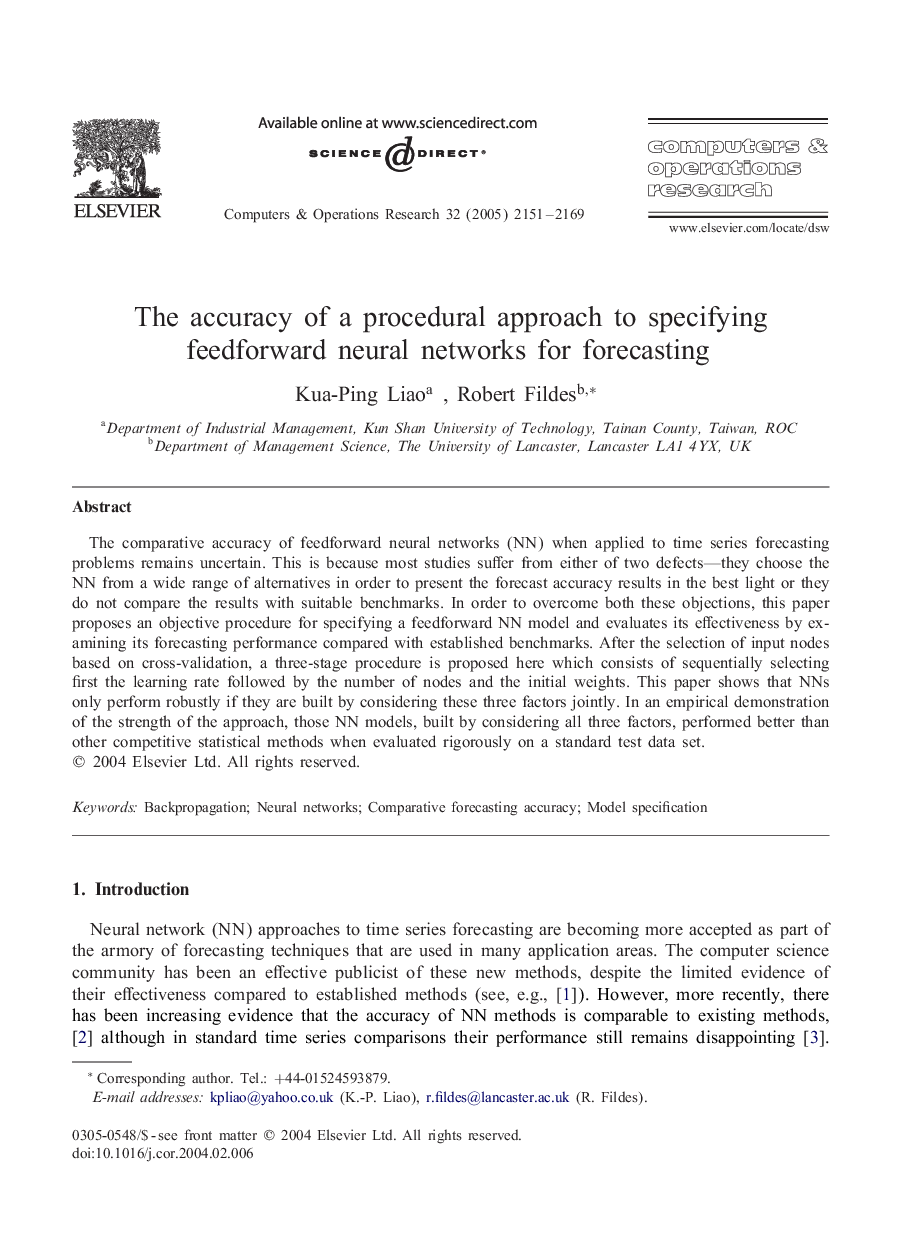| Article ID | Journal | Published Year | Pages | File Type |
|---|---|---|---|---|
| 474365 | Computers & Operations Research | 2005 | 19 Pages |
The comparative accuracy of feedforward neural networks (NN) when applied to time series forecasting problems remains uncertain. This is because most studies suffer from either of two defects—they choose the NN from a wide range of alternatives in order to present the forecast accuracy results in the best light or they do not compare the results with suitable benchmarks. In order to overcome both these objections, this paper proposes an objective procedure for specifying a feedforward NN model and evaluates its effectiveness by examining its forecasting performance compared with established benchmarks. After the selection of input nodes based on cross-validation, a three-stage procedure is proposed here which consists of sequentially selecting first the learning rate followed by the number of nodes and the initial weights. This paper shows that NNs only perform robustly if they are built by considering these three factors jointly. In an empirical demonstration of the strength of the approach, those NN models, built by considering all three factors, performed better than other competitive statistical methods when evaluated rigorously on a standard test data set.
